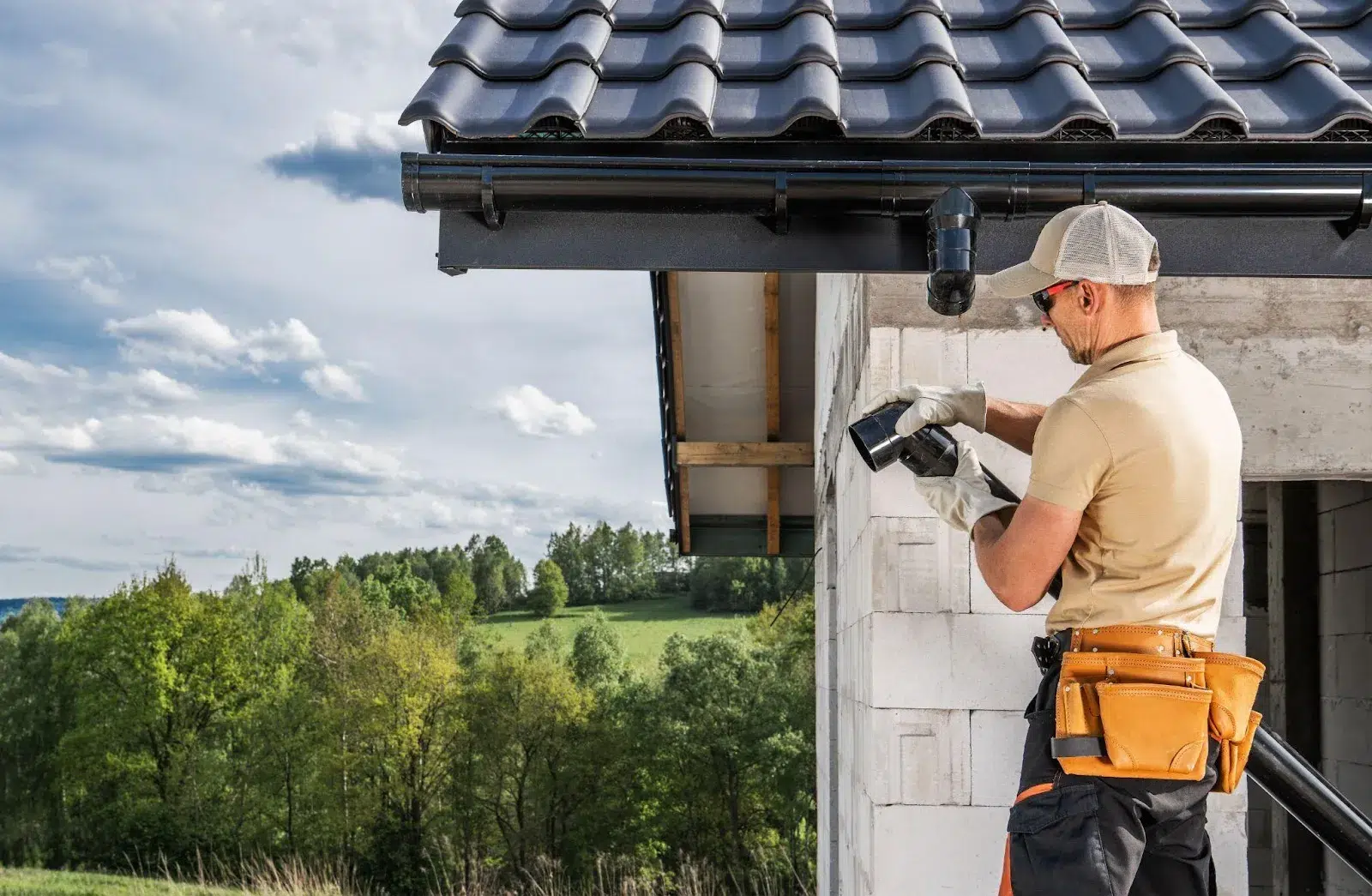Cedar trees are a beautiful and significant part of Canada’s natural landscape. This landscape is littered with both the White Cedar and the Western Red Cedar tree species. Both species have rich foliage and towering presence, which creates a visual appeal and makes them an essential part of the Canadian ecosystem. To keep the trees healthy and visually appealing, trimming must be done in the optimal season, and the best methods must be applied. Let us, therefore, talk about the best times to trim cedar trees in Canada, how to do it right, the techniques to use, and common mistakes to avoid.
Trimming Cedar trees and getting it right requires the input of professionals. Here at Custodia, we offer Professional hedge-trimming services. Our team is always ready to give your trees the care they deserve.
Types of Cedar Trees in Canada
Eastern White Cedar: Found primarily in Eastern Canada. They are famous for their dense, green foliage and conical shape.
Western Red Cedar: Common on the West Coast. Recognizable through reddish barks and aromatic wood. Red Cedars can grow to impressive heights.
Both species are popular for landscaping, hedges, and as focal points in gardens. Their popularity arises from their robust growth and aesthetic appeal.
Benefits of Cedar Trees
Cedar trees offer numerous benefits:
Ecological Advantages: They act as habitats for wildlife habitats, windbreakers, and soil erosion prevention agents.
Aesthetic: Cedars are used in landscaping for natural barriers and privacy screens.
Economic: Cedar wood is valued for its durability and resistance to decay, making it a preferred material for construction and furniture.
Why Trimming Cedar Trees is Important?
- Health of the Tree: Removing dead or diseased branches prevents the spread of pests and diseases, promotes new growth, and allows sunlight and air to reach the inner branches. This consideration reduces the risk of fungal infections. Read also, Go Green This Earth Day.
- Aesthetic and Structural Benefits: To maintain the desired shape, height and size to fit within the landscape design. Well-trimmed trees are healthier and aesthetically appealing, enhancing the overall garden or property appearance.
- Safety Concerns: To minimize safety risks, especially during storms. Trimming keeps Cedar trees structurally sound, reducing risks posed by breakaway branches.
At Custodia, our professionals are trained to take a Detail-Oriented Approach meant to achieve the above benefits and satisfy you.
Best Time to Trim Cedar Trees
1. Dormant Season Trimming
The dormant season presents an ideal opportunity for trimming cedar trees. During dormancy, which lasts from late fall to early spring, the trees experience a slowed metabolism, which reduces the risk of sap loss and stress. Trimming during this period allows the tree to heal before the growing season begins, promoting healthier and more vigorous growth.
Why Trim During Dormant Season?
- Less Stress: Trees are less active, so trimming them is less stressful.
- Better Healing: Trees can heal and prepare for spring growth.
- Pest Control: Removing dead or diseased branches now helps prevent pests and diseases.
Challenges of Trimming During Dormant Season
Cold Weather: Lower temperatures can make it uncomfortable to work outside.
Timing: Ensuring that trimming is finished before the first big frost to avoid damage.
Tips for Trimming During Dormant Season
- Sharp Tools: Use sharp tools to make clean cuts.
- Safety Gear: Wear gloves and goggles to protect yourself.
- Natural Shape: Trim following the tree’s natural shape to avoid stress.
2. Spring: A Good Time to Trim
Spring is another excellent time for trimming cedar trees. The weather is mild, making it comfortable to work outside, and it helps clean up any winter damage.
Benefits of Trimming in Spring
- Perfect Weather: The mild temperatures are ideal for trimming.
- Clean Up Winter Damage: Trim away any damage from winter.
- More Daylight: Longer days give you more time to work.
Challenges of Trimming in Spring
Pollen: High pollen can settle on freshly trimmed branches, making more work for you.
Tips for Trimming in Spring
- Cloudy Days: Trim on a cloudy day to avoid the cleaning solution drying too fast.
- Eco-Friendly Solution: Use a mix of water and vinegar for cleaning.
3. Summer: Bright Days for Trimming
Summer’s bright days help you see which branches need trimming, but there are challenges.
Benefits of Trimming in Summer
- Good Visibility: The bright sun makes it easy to see and clean all spots.
- Dry Weather: Less chance of rain interrupting your work.
Challenges of Trimming in Summer
Heat: High temperatures can be uncomfortable and make solutions dry too fast.
Busy Schedules: Summer activities can leave less time for yard work.
Tips for Trimming in Summer
- Early or Late: Trim early in the morning or late in the evening to avoid the heat.
- Use a Squeegee: Quickly remove cleaning solutions before they dry.
- Stay Hydrated: Drink plenty of water and take breaks.
4. Fall: Preparing for Winter
Fall is also a good time to trim cedar trees. The weather is mild, and it’s a good time to prepare your trees for winter.
Benefits of Trimming in Fall
Mild Weather: Comfortable temperatures for trimming.
Winter Prep: Helps your trees stay healthy through winter.
Challenges of Trimming in Fall
Falling Leaves: Leaves can stick to freshly trimmed branches.
Unpredictable Weather: Fall weather can change quickly.
Tips for Trimming in Fall
- Check Weather: Pick a dry, overcast day.
- Clean Gutters: Remove debris that can settle on your clean trees.
- Cool-Weather Cleaners: Use cleaners that work well in cooler temperatures.
- Winter: Best to Avoid Trimming
Winter is not a good time to trim cedar trees. It’s best to focus on other indoor tasks instead.
Challenges of Trimming in Winter
- Extreme Cold: Freezing temperatures make trimming difficult.
- Safety Hazards: Icy conditions are dangerous.
- Short Days: Less daylight means less time to work.
- Tough Grime: Winter dirt is harder to clean in the cold.
Tips for Winter
- Warmer Days: If you must trim, pick a warmer day and use a special solution.
- Focus Indoors: Work on indoor projects if you can’t trim outside.
- Hire Professionals: Consider professional help for safe winter trimming.
Step-by-Step Guide to Trimming Cedar Trees
Preparation
It is important that you gather all the tools needed as you prepare to trim your cedar trees. These tools include pruning shears for small branches, loppers to trim medium-sized branches, and pruning saws for large limps. To mitigate safety risks, also gather gloves and face masks/goggles. The final step should be determining the dead, diseased or overgrown branches that need trimming.
Techniques for Trimming
Making Clean Cuts: Be sure to avoid jagged or torn cuts. Ensure clean cuts to avoid damage and risk of infection.
Removing Dead or Diseased Branches: Cut back dead or diseased branches to the nearest healthy part of the tree. This will prevent the spread of disease and promote healthy growth.
Shaping and Thinning: When shaping the tree, follow its natural form. Avoid drastic changes to its shape, as this can stress the tree.
Special Considerations for Hedges and Topiaries: If you are trimming cedar hedges or shaping them into topiaries, maintain a uniform shape and size.
Post-Trimming Care
Properly dispose of the cut branches and debris after trimming is done. You can also mulch around the base of the tree to retain moisture and regulate soil temperature.
Common Mistakes to Avoid
Over-Trimming: Avoid stressing the tree by removing too much foliage. Over-trimming can also reduce the tree’s ability to photosynthesize and make it vulnerable to pests and diseases. Consider never removing more than one-third of the tree’s foliage in a single trimming session.
Improper Cutting Techniques: Flush cuts and left-out stubs can lead to decay and disease. Make your cuts just outside the branch collar—the swollen area where the branch meets the trunk or another branch. This helps the tree heal more effectively.
Ignoring Tree Health: Pay attention to signs of stress or disease after trimming. Symptoms like wilting, yellowing leaves, or unusual growth patterns can indicate problems. If you notice these signs, consult a professional arborist for advice on how to address the issues.
To avoid these common mistakes, contact Custodia Home Management Services for a quotation, customized service plan, and the best advice on when to trim your cedar trees.
General Tips for Trimming Cedar Trees
- Use the Right Tools: Invest in high-quality tools, as dull tools can cause jagged cuts and damage the tree.
- Clean cuts: Use a mix of water and vinegar or a store-bought tree cleaner. Avoid ammonia-based cleaners, as they can leave streaks and damage the tree.
- Tidy Up: Clear away any debris around the base of the tree. You can even use a soft brush and mild soap to clean off any dirt or grime.
- Safety First: Ensure ladder stability and follow safety precautions. Consider using an extendable pole for high branches to avoid climbing.
- Regular Maintenance: Regular trimming prevents build-up and makes each session easier. Aim to trim trees at least twice a year, with spot cleaning as needed.
Conclusion: Is There a Best Season to Trim Cedar Trees in Canada?
Yes!
The dormant season is the absolute cheat code for trimming cedar trees. The mild temperatures in the fall and spring also create an optimal environment to ensure your cedar tree landscape is in shape. With the summer, it will be essential that you find a way to manage the excess heat. Winter is a non-optimal period as there are so many safety concerns to be addressed for effective trimming.
The right tips and timing are an effective way to keep your cedar trees healthy, beautiful, and a standout feature in your landscape all year round. Through regular trimming, the use of proper techniques, and avoidance of common mistakes, cedar trees can thrive and add significant value and beauty to your property.




